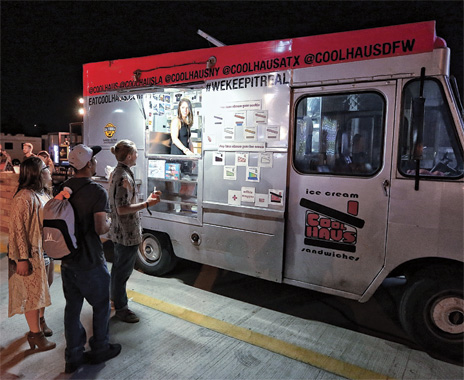When it comes to creating loyalty among Millennial consumers, the right approach is something of a mystery for many operators. After all, the 18–34-year-old population in America is hugely diverse with a variety of views, lifestyles, and consumer tastes.
Nevertheless, experts say brands can embrace certain generalizations of Millennial values to foster deeper loyalty, including their desire to connect digitally; their support for nonprofits, local businesses, and charitable causes; and their desire for brands to feel organic and real.
Recent data from a survey administered by Justin Guinn, a market research associate at Software Advice, suggests that Millennials’ use of loyalty programs is different from other generations; some even ignore programs that do not match their needs. Guinn found that in these cases, the rewards either do not appeal to Millennials or the programs are not accessible enough to them through their phones and social media.
“Millennials aren’t forgoing loyalty programs,” Guinn says. “They’re just looking for the right ones.”
Millennials are attractive customer targets because of their growing influence. Data from the Pew Research Center showed that Millennials were projected to surpass the Baby Boomers in population in 2015.
Charles Wiedenhoft, director of strategy planning at marketing agency Red Door Interactive says there is a certain core set of values restaurants should know when appealing to Millennials.
“Values I hear a lot about are things like authenticity, reliability, and a sense of belonging—all important things to Millennials,” Wiedenhoft says. “[It’s good] if restaurants can show that they’re facilitating genuine experiences, and they’re open to hearing feedback and recommendations.”
Natasha Case, cofounder and CEO of Coolhaus, a Los Angeles–based gourmet ice cream sandwich concept, says her brand wants to be the signature ice cream of the Millennial generation. Coolhaus garners loyalty with those customers by responding to and even rewarding their feedback on social media, Case adds. Coolhaus has a Snapchat “daily story” (available to anyone who follows Coolhaus on the app), which sometimes includes secret passwords for discounts or sneak peeks at new items.
Coolhaus also uses soft launches to garner customer input on new product ideas. In some cases the brand hosts exclusive tasting parties to showcase proposed flavors. This crowdsourcing technique fosters a sense of ownership that Millennials appreciate.
The ice cream brand also has an added “in” with the younger demographic: The food truck–borne concept can cart to popular, trendy festivals like Coachella in California.
“It’s kind of like an oasis,” Case says of the event. “You’re in the desert, it’s hot, you’re dehydrated, then you get a Cap’n Crunch peanut butter cookie with a whiskey [flavored] ice cream and it’s heaven-sent.” Case adds that unique flavors like Fried Chicken and Waffles ice cream appeal to Millennials.
Last August, Firehouse Subs rolled out a new loyalty rewards program to about 900 restaurants. Using an Android- or iOS-powered smartphone, customers can accrue rewards points for ordering through the Firehouse app. Matt Olsen, senior manager of digital marketing for Firehouse Subs, says the app (including an in-app game called BlazeHopper) appeals to both Millenials and the average non-Millennial customer. It also serves a dual purpose, allowing Firehouse to collect customer data to help customize a program that meets consumer needs.
“The things that appeal to Millennials really also appeal to our broader customer base—things like being able to interact in a digital channel,” Olsen says. “For some people, such as younger digital natives, this is, of course, an absolute must.”
Guinn’s data, along with interviews with industry consultants, shows that most Millennials are seeking a personal connection with brands—something loyalty programs can help foster if done right. Among the 346 Millennials surveyed, the following are the top reasons they quit the programs: rewards were not valuable enough (59 percent); discounts were not high enough (57 percent); or rewards took too long to accrue (50 percent).
In the same survey, 37 percent said they wanted to receive discounts through the programs, 30 percent said they wanted to accrue points for dollars spent, and 20 percent said they wanted to earn points for number of visits to a restaurant.
Despite these numbers, Guinn says, brands should not sacrifice their bottom line when considering loyalty programs. Exclusivity or nonmonetary rewards such as prioritizing a section of a restaurant for loyalty program members to have first dibs on reservations could also retain customers.
The Brand Keys Customer Loyalty Engagement Index ranked Dunkin’ Donuts No. 1 in customer loyalty in the coffee category last year. Scott Hudler, vice president of global consumer engagement at Dunkin’ Brands, says in an email that the DD Perks loyalty program’s integration with phone apps is key for Millennial engagement; the program’s roughly 3.6 million users earn points toward free beverages with every visit.
He adds that Dunkin’ continues to enhance its mobile app and rewards program to better engage Millennials. To that end, Dunkin’ began testing delivery and On-the-Go Ordering in select local markets in the U.S. last November.
“We’ve also recently collaborated with social influencer and ‘Viner’ Logan Paul to create content that highlights the DD Perks program and to reach a more Millennial audience,” Hudler says. Paul was the eighth most-followed user on the social media video–sharing app Vine last year.













